Holding up posters saying “Don’t shoot our kids,” Hong Kong residents and schoolmates of a teenage demonstrator shot at close range in the chest by a police officer rallied yesterday to condemn police actions and demand accountability.
The shooting on Tuesday during widespread anti-government demonstrations on China’s National Day was a fearsome escalation in Hong Kong’s protest violence.
The 18-year-old is the first known victim of police gunfire since the protests began in June. He was hospitalized and his condition was yesterday described by the government as stable.
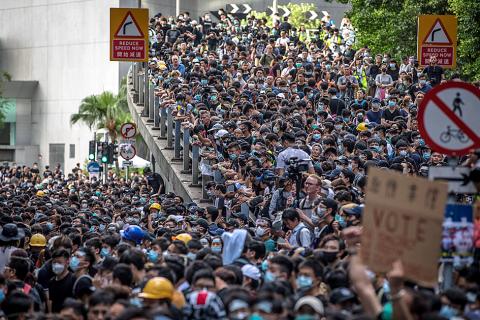
Photo: EPA-EFE
The officer fired as the teen, Tsang Chi-kin (曾志健), struck him with a metal rod.
The use of lethal weaponry is sure to inflame widespread public anger about police tactics during the crisis, widely condemned as heavy-handed.
“The Hong Kong police have gone trigger-happy and nuts,” pro-democracy lawmaker Claudia Mo (毛孟靜) said yesterday.
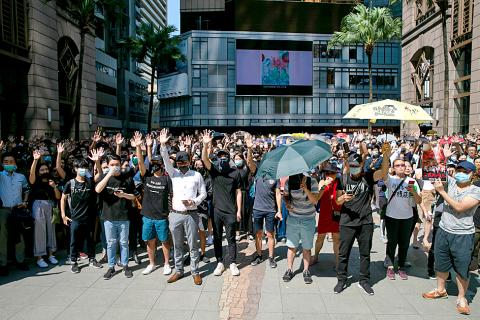
Photo: EPA-EFE
Mo, who said she repeatedly watched videos of the shooting, echoed what many people expressed.
“The sensible police response should have been to use a police baton or pepper spray, etc, to fight back. It wasn’t exactly an extreme situation and the use of a live bullet simply cannot be justified,” she said.
Several hundred people, including students, chanted anti-police slogans outside Tsang’s school in the Tsuen Wan neighborhood in the New Territories.
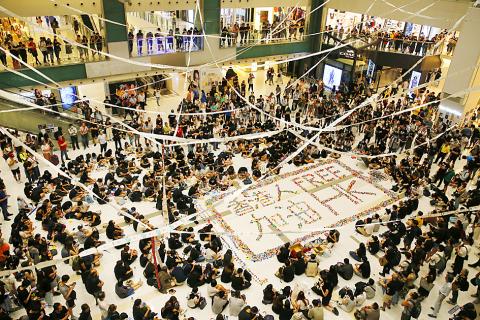
Photo: EPA-EFE
Sitting crossed-legged, some held an arm across their chest below their left shoulder — the location of the teenager’s gunshot wound. One held a handwritten message condemning “thug police.”
Schoolmates said that Tsang loves basketball and was passionate about the pro-democracy cause.
A student who wore a Guy Fawkes mask and declined to be named said that Tsang was “like a big brother” to him and other younger students.
“During the protests, we would feel safe if he is around, because he was always the first to charge forward and would protect us when we were in danger,” the student said. “I vividly remember him saying that he would rather die than be arrested. What an awful twist of fate that it was he of all people who was shot by the police.”
Many students felt that firing at Tsang’s chest, close to his heart, was an attempt to kill him.
Police said that Tsang has been arrested, despite being hospitalized, and that authorities would decide later whether to press charges.
More than 1,000 office workers skipped their lunch to join an impromptu march in the business district against the police shooting.
Dozens of black-clad demonstrators also protested at a luxury mall in Kowloon.
Police have defended the officer’s use of force as “reasonable and lawful,” with Hong Kong Police Force Commissioner Stephen Lo (盧偉聰) late on Tuesday said that the officer had feared for his life and made “a split-second” decision to fire a single shot at close range.
Asked why the officer shot at Tsang’s chest instead of his limbs, Deputy Commissioner Tang Ping-Keung (鄧炳強) yesterday said that the officer had fired at an area that could immobilize the youth quickly.
Tang denied that police had been given permission to shoot to kill.
The officer’s action was in line with international procedures, he said, but added that police would mount an in-depth investigation into the shooting.
Hong Kong’s government said that the widespread rioting on Tuesday was “planned and organized,” and called on parents and teachers to help restrain young protesters.
British Secretary of State for Foreign and Commonwealth Affairs Dominic Raab on Tuesday said that the shooting was “disproportionate” and warned that it could risk inflaming the situation.
Some US lawmakers also joined in the condemnation.
China’s liaison office in Hong Kong slammed British and US politicians, accusing them of condoning violence and crime.
“No time should be lost to stop violence, end the chaos and restore order to Hong Kong,” it said in a statement, calling the protesters the “greatest threat to Hong Kong and the common enemy of the international community.”

FREEDOM OF NAVIGATION: The UK would continue to reinforce ties with Taiwan ‘in a wide range of areas’ as a part of a ‘strong unofficial relationship,’ a paper said The UK plans to conduct more freedom of navigation operations in the Taiwan Strait and the South China Sea, British Secretary of State for Foreign, Commonwealth and Development Affairs David Lammy told the British House of Commons on Tuesday. British Member of Parliament Desmond Swayne said that the Royal Navy’s HMS Spey had passed through the Taiwan Strait “in pursuit of vital international freedom of navigation in the South China Sea.” Swayne asked Lammy whether he agreed that it was “proper and lawful” to do so, and if the UK would continue to carry out similar operations. Lammy replied “yes” to both questions. The
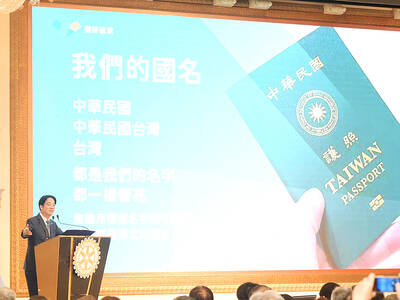
‘OF COURSE A COUNTRY’: The president outlined that Taiwan has all the necessary features of a nation, including citizens, land, government and sovereignty President William Lai (賴清德) discussed the meaning of “nation” during a speech in New Taipei City last night, emphasizing that Taiwan is a country as he condemned China’s misinterpretation of UN Resolution 2758. The speech was the first in a series of 10 that Lai is scheduled to give across Taiwan. It is the responsibility of Taiwanese citizens to stand united to defend their national sovereignty, democracy, liberty, way of life and the future of the next generation, Lai said. This is the most important legacy the people of this era could pass on to future generations, he said. Lai went on to discuss
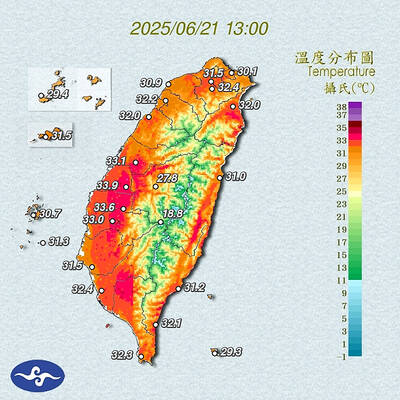
AMENDMENT: Climate change is expected to increase the frequency of high-temperature days, affecting economic productivity and public health, experts said The Central Weather Administration (CWA) is considering amending the Meteorological Act (氣象法) to classify “high temperatures” as “hazardous weather,” providing a legal basis for work or school closures due to extreme heat. CWA Administrator Lu Kuo-chen (呂國臣) yesterday said the agency plans to submit the proposed amendments to the Executive Yuan for review in the fourth quarter this year. The CWA has been monitoring high-temperature trends for an extended period, and the agency contributes scientific data to the recently established High Temperature Response Alliance led by the Ministry of Environment, Lu said. The data include temperature, humidity, radiation intensity and ambient wind,
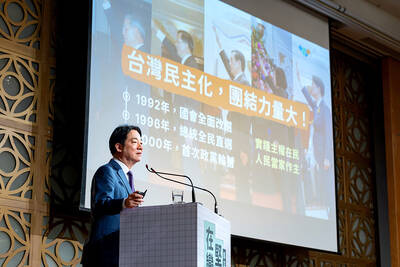
SECOND SPEECH: All political parties should work together to defend democracy, protect Taiwan and resist the CCP, despite their differences, the president said President William Lai (賴清德) yesterday discussed how pro-Taiwan and pro-Republic of China (ROC) groups can agree to maintain solidarity on the issue of protecting Taiwan and resisting the Chinese Communist Party (CCP). The talk, delivered last night at Taoyuan’s Hakka Youth Association, was the second in a series of 10 that Lai is scheduled to give across Taiwan. Citing Taiwanese democracy pioneer Chiang Wei-shui’s (蔣渭水) slogan that solidarity brings strength, Lai said it was a call for political parties to find consensus amid disagreements on behalf of bettering the nation. All political parties should work together to defend democracy, protect Taiwan and resist